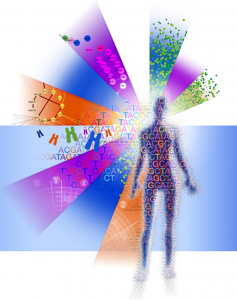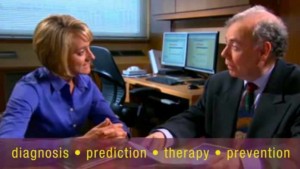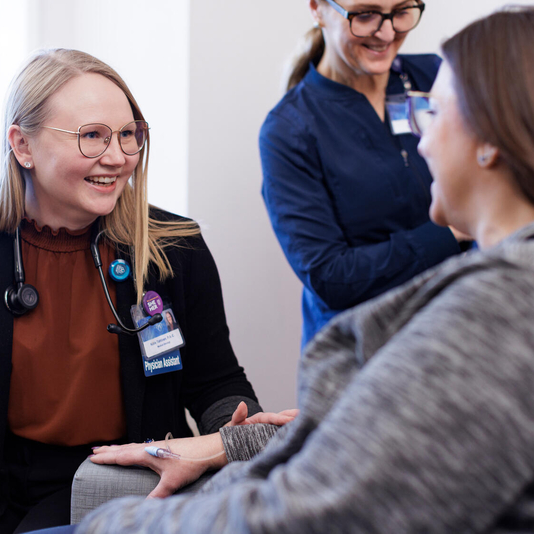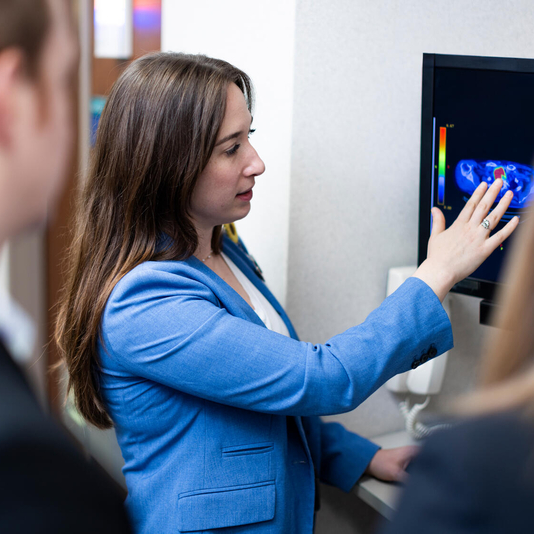-
Precision Medicine: Mayo Clinic Expert Describes Next Steps to Help More Patients
Rochester, Minn. – “Precision medicine” is becoming a national catchphrase after President Obama highlighted it in his State of the Union address. 
But what exactly is it? Richard Weinshilboum, M.D., acting director of the Mayo Clinic Center for Individualized Medicine, describes this new, rapidly advancing frontier in medicine and outlines 10 changes that would speed development and help more patients benefit from a personalized approach to health care:
What is precision medicine? In precision medicine, also called individualized medicine or personalized medicine, physicians use knowledge about a person’s personal genetic makeup to help determine the best plan for disease prevention, diagnosis and treatment. The mapping of the human genome in 2003 by U.S. scientists jump-started medical genomics; the Human Genome Project was an immense international collaboration that took 13 years and cost $3.8 billion. The National Institutes of Health’s National Human Genome Research Institute, which coordinated the project, estimates economic growth from that project at $798 billion.
"We are now poised to apply genomic technologies developed with the findings of the Human Genome Project into everyday patient care,” Dr. Weinshilboum says.
“However, if the U.S. is to remain the world leader in health care innovation and delivery, we need another national genomics effort that will accelerate scientific discovery and clinical implementation while continuing to encourage the rapid technological innovations and entrepreneurialism that have gotten us to this point."
MEDIA CONTACT: To schedule an interview with Dr. Weinshilboum or other Mayo Clinic individualized medicine experts, please contact Sam Smith or Robert Nellis in Mayo Clinic Public Affairs at 507-284-5005 or newsbureau@mayo.edu.
 What would help the U.S. continue to lead in precision medicine? President Obama’s call for a national initiative to advance individualized medicine, including increased funding to the National Institutes of Health to support advances in precision medicine, is an important step, Dr. Weinshilboum says. Other moves that would help include:
What would help the U.S. continue to lead in precision medicine? President Obama’s call for a national initiative to advance individualized medicine, including increased funding to the National Institutes of Health to support advances in precision medicine, is an important step, Dr. Weinshilboum says. Other moves that would help include:
- Adding bioinformatics to medical school and graduate school requirements to give physicians and other health care providers the tools they need to use genomic material.
- Updating and expanding government regulations to keep up with the growth of genomic technologies and potential treatments, including providing alternative tracks for the development and use of medications for small subsets of patients.
- Revising insurance guidelines to support genomic-based therapies.
- Standardizing biobank activities, using the same terms and templates so biobanks are more universally useful.
- Creating annotated, safe data repositories where all institutions can pool data and benefit from shared data while protecting patient privacy.
- Developing a next generation of electronic medical records that can securely store genomic data or easily interact with secure genomic data storage warehouses to facilitate incorporation of genomics into routine medical care.
- Using genomics to identify drugs that could be used as specialized cancer treatments.
- Improving incentives for researchers to collaborate and work in teams.
- Creating a national clearinghouse to match patients with genomic clinical trials.
- Bringing together federal and state regulators to develop a clear pathway toward the approval of next generation-based sequencing tests.
What are some precision medicine terms that people might start hearing more frequently from physicians, researchers and policymakers?
- Whole exome sequencing, also known as exome capture:A laboratory process that determines, all at once, the entire unique sequence of a person’s exome. The exome consists of all of the protein coding genes in a person’s DNA. These genes, which contain the instructions for how a cell behaves, account for an estimated 1 to 2 percent of
- Whole genome sequencing: A laboratory process that determines, all at once, the entire unique DNA sequence of a person’s genome. There about 6 billion “letters” in every human genome; everyone is unique.
- Genetic variants: Each of us is about 99.9 percent the same, genetically speaking. Even so, that 0.1 percent adds up to about 3 million individual genomic variants that differ between any two people. A major challenge in individualized medicine is finding the handful of variants that may lie behind a person’s cancer, diabetes, or Alzheimer’s disease, for example.
- Bioinformatics: A research field that focuses on the interpretation of genomic data and seeks to build sophisticated systems that help scientists and physicians quickly locate variants that play roles in diseases. This is a rapidly growing area: Scientists and physicians can now generate data much more quickly than they are able to interpret it.
- Next Generation Sequencing: Also known as high-throughput sequencing, next generation sequencing describes several new DNA sequencing technologies that allow scientists and physicians to decode and catalog large numbers of genomic sequences in a rapid and cost-effective manner.
For a longer glossary of individualized medicine terms, see the Mayo Clinic Center for Individualized Medicine.
###
About Mayo Clinic
Mayo Clinic is a nonprofit organization committed to medical research and education, and providing expert, whole-person care to everyone who needs healing. For more information, visit http://www.mayoclinic.org/about-mayo-clinic or https://newsnetwork.mayoclinic.org/.
About the Mayo Clinic Center for Individualized Medicine
The Mayo Clinic Center for Individualized Medicine is home to the Individualized Medicine Clinic, the world's first integrated multidisciplinary genomics clinic, serving patients with advanced cancer and complex diagnoses. The center discovers and integrates the latest in genomic, molecular and clinical sciences into personalized care for each Mayo Clinic patient. Visit http://mayoresearch.mayo.edu/center-for-individualized-medicine for more information.







